
EcoMat
Scope & Guideline
Pioneering the future of chemistry and materials science.
Introduction
Aims and Scopes
- Sustainable Energy Solutions:
The journal focuses on the development of materials and technologies that promote renewable energy sources, such as solar energy, hydrogen production, and battery technologies. - Electrocatalysis and Energy Storage:
Research on electrocatalytic materials, particularly for energy storage systems like batteries and supercapacitors, is a core area, emphasizing efficiency and sustainability. - Advanced Material Design:
EcoMat publishes studies on innovative materials, including nanomaterials and composites, that enhance performance in energy applications and environmental sustainability. - Environmental Remediation:
Research aimed at developing materials and systems for water purification, pollutant degradation, and waste recycling is a significant focus, reflecting the journal's commitment to environmental health. - Interdisciplinary Approaches:
The journal encourages interdisciplinary research that combines chemistry, materials science, and engineering to solve complex environmental challenges.
Trending and Emerging
- Two-Dimensional Materials:
Research on two-dimensional materials, particularly for energy storage and conversion applications, is gaining momentum, showcasing their unique properties and potential for high-performance devices. - Biomaterials and Natural Polymers:
There is a growing emphasis on using biopolymers and natural materials for sustainable applications, ranging from energy storage to environmental remediation, reflecting a trend towards eco-friendly solutions. - Hybrid and Composite Materials:
Emerging studies focus on hybrid systems that combine different materials to enhance performance in energy applications, indicating a trend towards innovative material combinations. - Smart and Wearable Technologies:
Research on wearable energy harvesting devices and sensors is expanding, highlighting the intersection of materials science with health and environmental monitoring. - Machine Learning in Materials Science:
The incorporation of machine learning techniques to predict material properties and optimize designs is on the rise, showcasing a trend towards data-driven research methodologies.
Declining or Waning
- Traditional Battery Technologies:
While the journal continues to publish research on batteries, there is a noticeable decline in studies focused on conventional lithium-ion technologies, as newer systems gain traction. - Basic Material Characterization:
Research emphasizing fundamental material characterization techniques without direct applications or innovations has decreased, suggesting a shift towards more applied research. - Conventional Photovoltaic Materials:
Research on traditional silicon-based solar cells is less frequently published, indicating a preference for novel materials and hybrid systems in photovoltaic research. - Single-Component Catalysts:
There is a waning interest in studies centered on single-component catalysts, as the field moves towards more complex, multi-functional materials that can enhance catalytic performance.
Similar Journals

Interdisciplinary Materials
Exploring the Synergy of Engineering, Physics, and ChemistryInterdisciplinary Materials is a prominent Open Access journal published by Wiley, dedicated to advancing knowledge and innovation in the field of materials science. With an ISSN of 2767-4401 and an E-ISSN of 2767-441X, this journal seeks to foster interdisciplinary collaborations and promote high-quality research that bridges the gap between materials engineering, physics, chemistry, and emerging technologies. Established in 2022, it aims to provide free and unrestricted access to cutting-edge research findings, ensuring that pivotal discoveries reach a broad audience. Interdisciplinary Materials assesses submissions rigorously, aspiring to achieve high impact and relevance, catering to researchers, professionals, and students keen on exploring innovative materials and their applications. With its commitment to scientific excellence, this journal stands as a vital resource for those looking to stay abreast of the latest advancements in materials research.
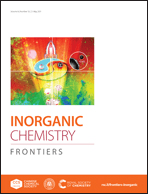
Inorganic Chemistry Frontiers
Connecting Ideas, Inspiring Discoveries in Inorganic ChemistryInorganic Chemistry Frontiers, published by the esteemed Royal Society of Chemistry, stands at the forefront of advancements in the field of inorganic chemistry, boasting a prestigious Q1 ranking in its category as of 2023 and an impressive Scopus Rank of #3 out of 79, placing it in the 96th percentile. Since its inception in 2014, this journal has provided a robust platform for high-quality research that spans the diverse and rapidly evolving areas of inorganic chemistry. As an open-access journal, it ensures that the findings presented are readily accessible to researchers, educators, and practitioners globally, fostering an inclusive environment for the dissemination of knowledge. With its rigorous peer-review process, Inorganic Chemistry Frontiers aims to facilitate interdisciplinary dialogue and innovation, making it an essential resource for anyone dedicated to exploring the myriad applications and theoretical advancements within inorganic chemistry.

MRS Energy & Sustainability
Innovating Materials for a Greener TomorrowMRS Energy & Sustainability is a premier interdisciplinary journal published by SpringerNature, focusing on advancing the understanding of energy systems and sustainability within the context of materials science and engineering. Since its inception in 2014, this journal has rapidly gained recognition in the academic landscape, achieving impressive rankings including Q1 in Electronic, Optical and Magnetic Materials and Mechanics of Materials, and Q2 in Energy Engineering and Power Technology as well as Renewable Energy, Sustainability and the Environment, as of 2023. The journal's ISSN is 2329-2229 and E-ISSN is 2329-2237. With a commitment to open access, it provides researchers and professionals with the latest findings and insights essential for guiding innovations in energy solutions and sustainable practices. The journal's global reach and high-impact reputation make it an invaluable resource for scientists, engineers, and policymakers dedicated to addressing the contemporary challenges of energy and sustainability. With a diverse scope and high Scopus rankings, MRS Energy & Sustainability continues to be at the forefront of research that shapes our energy future.
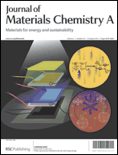
Journal of Materials Chemistry A
Transforming Ideas into Sustainable Materials and Energy SolutionsJournal of Materials Chemistry A, published by the Royal Society of Chemistry, stands as a leading peer-reviewed journal in the fields of Chemistry, Materials Science, and Renewable Energy. With an impressive ranking within the top quartile (Q1) across these disciplines in 2023, this journal not only showcases groundbreaking research but also addresses pivotal challenges in sustainable materials and energy. Spanning from 2013 to 2024, it serves as a vital platform for scientists and engineers to present innovative solutions and advances in materials that directly contribute to environmental sustainability. Accessible to a broad audience, the journal's contributions are essential for anyone engaged in the development of new materials and technologies that promise to shape a greener future. With a commitment to high-quality open access publishing, the Journal of Materials Chemistry A is instrumental in disseminating impactful research to enhance scholarly communication and foster collaboration in an increasingly interconnected research landscape.

Energy & Environmental Materials
Innovating Energy and Environmental FrontiersEnergy & Environmental Materials, published by WILEY, is an esteemed academic journal dedicated to pioneering research in the multifaceted domains of energy, environmental science, and materials science. Since its inception in 2018, this journal has rapidly established itself as a leading platform, holding a prestigious Q1 ranking across multiple categories including Renewable Energy, Sustainability, and Waste Management, reflecting its significant contributions to advancing knowledge in these critical areas. With a robust Scopus ranking that positions it in the top percentile for Environmental Science and Materials Science, it caters to a diverse audience of researchers, professionals, and students seeking cutting-edge findings and practical applications in energy efficiency and sustainable materials. This open-access journal facilitates the dissemination of innovative research and aims to bridge the gap between scientific exploration and real-world solutions for a sustainable future. The editorial team encourages submissions that explore both theoretical and practical aspects, ensuring that every publication not only contributes to the academic landscape but also drives impactful change in energy and environmental practices.
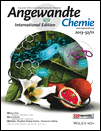
ANGEWANDTE CHEMIE-INTERNATIONAL EDITION
Connecting Researchers with the Latest in Chemical ResearchANGEWANDTE CHEMIE-INTERNATIONAL EDITION, published by WILEY-V C H VERLAG GMBH, stands as a leading journal in the fields of Chemistry and Catalysis, holding a prestigious position with a Q1 ranking in both categories as of 2023. With an ISSN of 1433-7851 and an E-ISSN of 1521-3773, this esteemed publication has been an invaluable resource for the global scientific community since its inception in 1962. The journal's impact is further underscored by its remarkable Scopus rankings, where it occupies the 13th place among 408 journals in General Chemistry and the 4th place among 68 in Chemical Engineering - Catalysis, marking it in the 96th and 94th percentiles, respectively. Although it does not offer Open Access, ANEWANDTE CHEMIE-INTERNATIONAL EDITION remains essential for researchers, professionals, and students seeking to stay abreast of cutting-edge developments and innovations in chemical sciences. Its comprehensive scope and rigorous peer-review process ensure that only the highest quality research finds its way to publication, contributing significantly to the advancement of chemistry worldwide.

ChemNanoMat
Exploring the Future of Nanoscale MaterialsChemNanoMat is a prestigious academic journal published by WILEY-V C H VERLAG GMBH, dedicated to the rapidly evolving fields of nanoscale materials and their applications in diverse areas such as biomaterials, energy engineering, and environmental sustainability. With the journal's ISSN 2199-692X and recognized quality, as evidenced by its Q2 rankings across multiple categories—including Biomaterials and Renewable Energy—ChemNanoMat serves as a crucial platform for researchers, professionals, and students to disseminate their findings and foster collaborations. Operating from Germany, the journal encourages the exploration of innovative materials solutions to meet tomorrow's challenges. While it does not currently offer open access options, it remains highly regarded in the academic community with a competitive impact factor that emphasizes its relevance and influence in guiding future research directions. Covering a broad scope from 2015 through 2024, ChemNanoMat is key for anyone invested in the advancement of materials chemistry and related scientific fields.
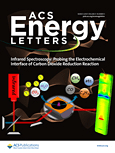
ACS Energy Letters
Empowering Research for a Greener TomorrowACS Energy Letters, published by the American Chemical Society, is a prestigious peer-reviewed journal designed to disseminate innovative and impactful research in the multifaceted field of energy science. Since its inception in 2016, the journal has quickly ascended to a remarkable status, achieving Q1 rankings in critical categories including Chemistry (miscellaneous), Energy Engineering and Power Technology, Fuel Technology, Materials Chemistry, and Renewable Energy, Sustainability and the Environment as of 2023. With an emphasis on rigorous research methodologies and interdisciplinary collaboration, ACS Energy Letters serves as a vital platform for scholars, professionals, and students to explore cutting-edge research that addresses contemporary energy challenges. While maintaining a commitment to advancing knowledge without open access, it offers profound insights into sustainable practices and innovative solutions that are crucial for the future of energy systems globally. The journal's esteemed standing in the chemical and energy sectors underscores its significance, making it an essential resource for anyone invested in the advancement of energy technologies and sustainable practices.

EnergyChem
Leading Research for Tomorrow's Energy Challenges.EnergyChem is a premier academic journal published by ELSEVIER, dedicated to advancing the field of energy chemistry and its applications in sustainable technologies. With a strong focus on biomaterials and innovative chemistry solutions, the journal has established itself as a leading platform within the research community, boasting remarkable rankings such as Q1 in Biomaterials, Chemistry (miscellaneous), and Energy (miscellaneous) for 2023. Notably, it ranks 2nd in both Materials Science and Energy categories, reflecting the high caliber of research it publishes, which is crucial for tackling pressing global energy challenges. Since its inception in 2019, EnergyChem has been committed to open and accessible research, making it an invaluable resource for researchers, professionals, and students striving for cutting-edge insights in energy conversion and storage. With its target audience in mind, the journal encourages submissions that explore innovative materials, processes, and applications that will contribute to a sustainable energy future.
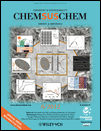
ChemSusChem
Transforming Challenges into Sustainable InnovationsChemSusChem is a premier interdisciplinary journal, published by WILEY-V C H VERLAG GMBH, that focuses on the critical fields of Chemical Engineering, Energy, Environmental Chemistry, and Materials Science. Since its inception in 2008, the journal has consistently maintained a Q1 ranking across multiple categories, highlighting its role as a vital resource for researchers and professionals dedicated to advancing sustainable chemical processes and technologies. With an impressive impact factor, it ranks 12th in General Chemical Engineering and is highly regarded within its scopes, indicating the journal's commitment to publishing high-quality, innovative research that addresses global challenges in energy and environmental sustainability. Though it operates on a subscription model, its contributions are essential for those in academia and industry seeking cutting-edge developments in sustainable chemistry. As it approaches its convergence span through 2024, ChemSusChem continues to shape the future of sustainable chemistry, making it a must-read for students, researchers, and practitioners alike.